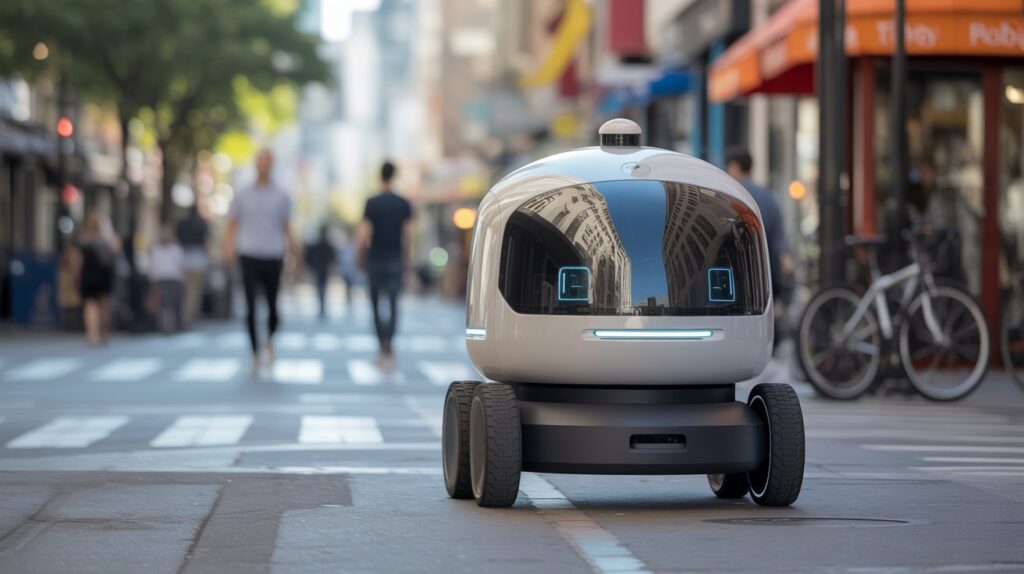The autonomous last mile delivery market is at an inflection point. Market research places the industry at approximately USD 0.9 billion in 2023 with a forecast to reach around USD 4.2 billion by 2030, representing a compound annual growth rate of roughly 22.7 percent. Those headline numbers capture more than investor enthusiasm; they reflect a broad shift driven by escalating e-commerce volumes, tighter delivery SLAs, falling hardware costs and rapid improvements in autonomy and AI.

Fundamentally, three structural shifts are powering adoption. First, changing consumer expectations and the rise of quick commerce have pushed retailers to offer ever-shorter delivery windows, making conventional driver-based methods increasingly costly and hard to scale. Second, technology maturation across perception, compute and battery systems has materially improved vehicle and drone reliability, enabling real pilots to move into repeatable commercial operations. Third, regulatory regimes are loosening in key markets, with regulators moving from isolated waivers toward formal frameworks that allow beyond-visual-line-of-sight operations and clearer certification pathways. The U.S. Transportation Department and FAA actions in 2025 are a prominent example of regulatory change that could accelerate commercial drone deployments if implemented as proposed.
Download PDF Brochure @
https://www.marketsandmarkets.com/pdfdownloadNew.asp?id=41240862
Platform dynamics are shaping where value will accrue. Aerial delivery drones and ground autonomous vehicles play complementary roles rather than compete head-to-head. Drones are rapidly scaling for lightweight, time-critical shipments—medical supplies and small retail parcels—especially where direct point-to-point delivery reduces stem miles. Ground robots and self-driving vans address heavier payloads and multi-stop routes, fitting grocery and bulk e-commerce use cases. Long-range capabilities, defined as missions over 20 kilometers, are gaining priority because they unlock larger coverage areas and better route economics for both aerial and ground platforms. The result is a hybrid network approach: micro-fulfillment and staging hubs push parcels into mixed fleets where the platform is chosen for payload, range and urban context.
Infrastructure and software are emerging as key battlegrounds. While headlines often focus on vehicles and drones, the most durable economic moats are forming around fleet orchestration platforms, air-traffic management for low-altitude corridors, charging and droneport networks, and high-fidelity local maps. Companies that can integrate hardware, teleoperations, predictive maintenance and marketplace relationships will convert pilot gains into sustainable margin improvements. Operational metrics that matter include cost per drop, first-attempt success rate, fleet utilization and mean time between failures; improvements in these metrics are what turn novelty into repeatable ROI for carriers and retailers.
Real-world traction is already visible. Sidewalk delivery leader Starship Technologies has recorded millions of autonomous deliveries across campuses and urban deployments, demonstrating daily operational scale for low-speed sidewalk robots. Drone logistics specialist Zipline continues to expand healthcare delivery programs and is experimenting with food and retail pilots in U.S. markets, showcasing how the same platform can address both mission-critical and consumer use cases. These deployments underscore that the market is not hypothetical; it is moving from pilots to defined commercial corridors and verticals.
The competitive landscape is diverse and global. Large retailers and logistics incumbents are developing in-house capabilities or partnering with specialists, while startups focus on narrower components such as perception stacks, teleoperation or fleet orchestration. Key players to watch include Amazon (large-scale drone investment and logistics integration), Nuro (ground autonomous vehicles for neighborhood delivery), Starship Technologies (sidewalk robots at scale), Zipline (healthcare and commercial drone services), Nuro and Kiwibot on ground robotics, Wing (Alphabet-backed drone initiatives), Matternet (specialized medical drone networks) and Flirtey (early drone delivery operator). This mix of deep-pocketed incumbents and focused startups is healthy for the industry: incumbents provide distribution scale and capital, while startups deliver rapid innovation and specialized engineering.
Nevertheless, material risks remain. Regulatory harmonization across municipalities and countries is incomplete, meaning national-level approvals do not always translate to city-level operating rights for curbspace and sidewalks. Safety, noise, privacy and cybersecurity concerns are real and can constrain public acceptance if not proactively managed. Hardware limitations—weather sensitivity for drones and edge-case perception failures for robots—mean many deployments remain corridor- or campus-limited. Insurers and finance partners are still learning how to underwrite fleets that mix physical assets with software risk. These frictions slow adoption but also create opportunities for companies that can demonstrate standardized safety metrics and reliable unit economics.
For operators and investors, practical strategy follows from these realities. Logistics providers should prioritize high-density corridors and verticals—retail quick commerce and healthcare—where economics are most favorable and regulatory cooperation is more attainable. Technology vendors should focus on modular stacks and open APIs that can integrate with existing carrier systems. Cities and regulators should expand sandbox programs with clear KPIs so pilots can produce the data needed for safe scaling. Investors should favor businesses that combine operational data depth, software differentiation in orchestration or airspace management, and clear pathways to capture infrastructure value (droneports, charging networks, or micro-fulfillment).
The autonomous last mile delivery market is shifting from technical feasibility to economic viability. Backed by strong market forecasts and early commercial proof points, the sector is poised for rapid growth through the rest of the decade. Companies that align platform capabilities with the right verticals, invest in infrastructure and safety, and collaborate with regulators will be the firms that convert pilots into large-scale operations and long-term commercial value.